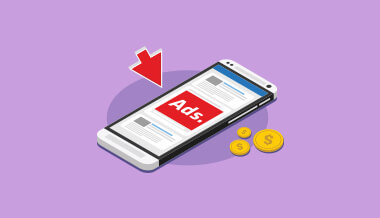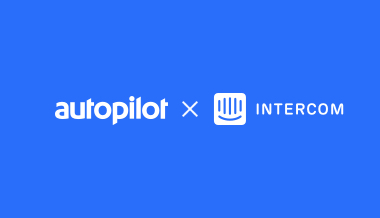May 3, 2019
Customer engagement strategies
Investing in customer retention pays off. After all, there are plenty of stats to support the importance of retention and thought leaders like Harvard Business Review and Forrester have been urging companies to prioritize their retention efforts for years.
And yet, many marketers continue to focus their resources on acquiring new customers instead of retaining existing ones. This occurs in many industries, including SaaS, even though it’s far more expensive to acquire new customers than it is to retain existing ones. Obviously, customer acquisition is necessary (without acquisition, there will be no new customers coming into the business) but if your current customers don’t stick around, you can’t expect to grow.
So how do you create a customer retention strategy that keeps your current customers happy and drives more traffic to your business? Let’s take a look at these 5 customer retention strategies:
Set your customers up for success
Customer retention efforts are most effective when they’re proactive, not reactive. In other words, it’s much easier to set customers up for success than to frantically rescue at-risk customers later on. Proactive customer support involves providing your customer with the necessary resources to succeed right from day one, not just when things go wrong. For example, when someone signs up for a free Autopilot trial, they receive a welcome email that provides 3 ways to get started:
- Sign up for a product demo, where they can get answers in real time
- Follow a step-by-step guide to create their first journey, either from scratch or using one of our templates
- Access to customer support, where they can get personalized attention from one of our team members
It’s also important to set clear expectations. Customer satisfaction (which has a significant impact on customer retention) ultimately comes down to how well you perform in comparison with how well the customer expects you to perform. By setting expectations early, you gain control over how you’ll be perceived down the road. And if and when issues do arise down the road, your support team must be ready to resolve them in a timely fashion.
Use customer lifecycle stages to guide your marketing
To help you deliver the right message at the right time, think about your customer retention efforts within the context of your customer lifecycle stages. Customer lifecycle stages vary from business to business. For example, e-commerce customers typically transition through at least four stages (one-time customer, return customer, repeat customer, and loyal customer) while SaaS customers may go through different stages, but nonetheless transition from prospect to advocate.
Either way, breaking the larger customer journey down to lifecycle stages will allow you to quickly identify what messaging is appropriate for your audience at that point in time. For example, offering discounts may be appropriate if your goal is to encourage a one-time buyer to make a repeat purchase, but not for loyal customers who are already buying regularly.
Segmentation is your friend
Effective customer retention efforts are highly targeted, which is why it’s important to divide your customer base into meaningful segments. Autopilot’s Smart Segment integration is an excellent tool that will help you do this. Depending on your business type, you can divide your contact database into segments based on usage data, transactional data, or both.
This process can help you determine which segments are valuable, engaged, and at-risk. But the possibilities are endless, so don’t be afraid to get creative. For example, by including Net Promoter Score (NPS) data in your analysis, you can identify segments in desperate need of attention, like high-value detractors: customers who make significant contributions to your bottom line but are so unhappy that they’ve begun to spread negative word of mouth.
Ensure your customer journeys have a purpose
Customer retention marketing is most effective when it’s relevant and timely, which is why setting up automated customer journeys is a sure-fire way to boost your retention rate. Design each customer journey with one goal in mind, whether it be to encourage one-time buyers to make a second purchase or prevent at-risk customers from churning.
Let’s use the latter scenario as an example and pretend you work for a SaaS company. You may discover that customers who don’t log into their accounts for 30 days often churn. What you can then do is create a customer journey that notifies your team when at-risk customers begin to use your product less frequently. As you can see in this journey, Slack and email alerts will ensure that your team members take swift action to minimize the churn of these customers.
An early warning system like this is beneficial because it can help you rescue customers before they churn.
Allow your customers to provide feedback
Customer feedback helps you identify opportunities for improvement — but how does this lead to increased customer retention? For one thing, reducing customer effort is known to increase customer loyalty (Harvard Business Review). In other words, anything you can do to make your customer’s life easier helps boost your retention rate. When customers provide suggestions concerning how you should evolve your product or service, they become invested in the outcome. When you then act on their suggestions, reciprocity comes into play. Maybe you made their life easier or helped them achieve an outstanding goal. The result: they’ll reward you with their business.
The following journey allows you to send a Delighted NPS survey to people who have signed up for a trial. A few days before the trial period ends, the user is sent a survey. You can then use their responses to gauge their likelihood of purchasing your product (and trigger a notification to sales, if required) or action customer feedback.
Remember: acquisition and retention go hand in hand
There’s nothing wrong with executing an acquisition strategy, but it’s important to remember that acquisition should sit alongside retention when it comes to supporting business growth. After all, an effective customer retention strategy will help you enhance your customer experience and ultimately boost your bottom line.













